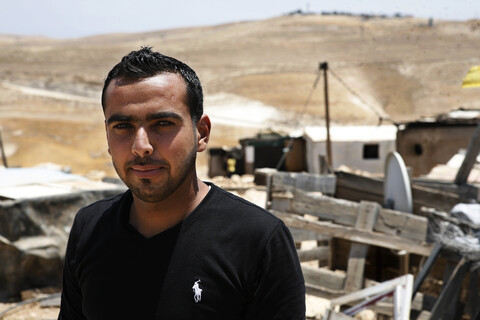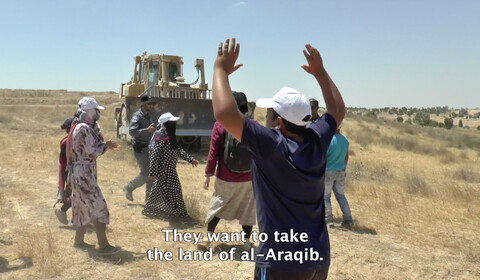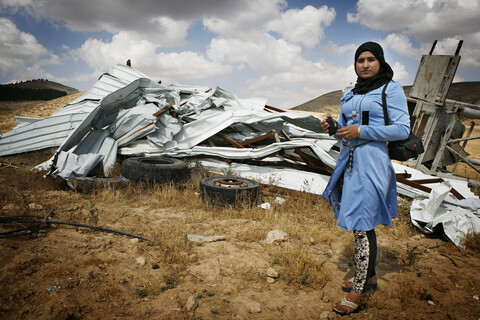The Electronic Intifada al-Mufaqarah 13 October 2015

Despite the threat of violence at the hands of settlers or the army, Heba helps her father shepherd their livestock in the South Hebron Hills in 2012.
Heba sits on a rock and adjusts her headscarf while she surveys the sheep grazing in the dry shrubs of the South Hebron Hills.
The sheep quietly follow Heba and her father’s calls, oblivious to the danger posed by the Israeli outpost to a next to where they are grazing. The outpost, called Avigayl, was established in 2001 and is illegal under both Israeli and international law.
Heba lives in al-Mufaqarah, a Palestinian hamlet located in Area C — the 64 percent of the West Bank under direct Israeli military rule.
To gain control of the South Hebron Hills, the Israeli army declared much of it a closed military zone in the 1970s. The military called the area Firing Zone 918.
The “firing zone” includes 12 villages, among them al-Mufaqarah.
These communities are home to some 1,300 Palestinians, whom the Israeli army has been trying to expel for decades.
Residents remain locked in an expensive and lengthy legal battle with the Israeli state for the right to remain on their ancestral lands, preventing the village from being able to develop.
Though Israel’s state attorney exempted al-Mufaqarah from plans to evacuate Palestinians in the firing zone in 2012, the village cannot develop without building permits which Israel does not grant.
Like the rest of al-Mufaqarah’s inhabitants, Heba’s family has no running water and no electricity. Yet Avigayl, which encroaches on Firing Zone 918 and on private Palestinian land, has both.
While the half million Jewish settlers in the West Bank are regulated by Israeli civil law, Palestinians like Heba live under a regime of military orders which deny them safety.
Silvia Boarini is a photojournalist based in Bir al-Saba and is currently working on a documentary on Naqab Bedouins.
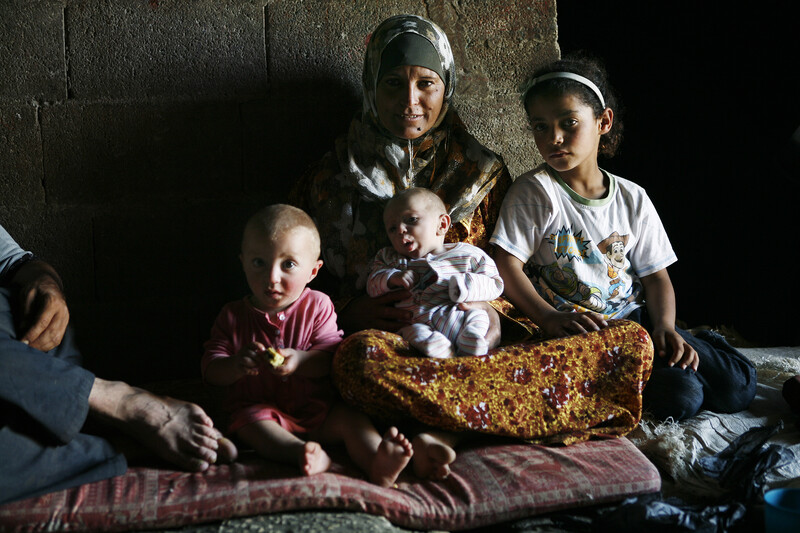
Heba’s mother and siblings in their cave in 2012. Many of al-Mufaqarah’s residents live in overcrowded caves. Although cave dwelling is a tradition in the area, most caves in Palestinian villages are today used for storage. In al-Mufaqarah, cave dwelling is very much a necessity, since Israel rarely grants the permits it requires of Palestinians to build in Area C — a designation assigned to more than half of the occupied West Bank.
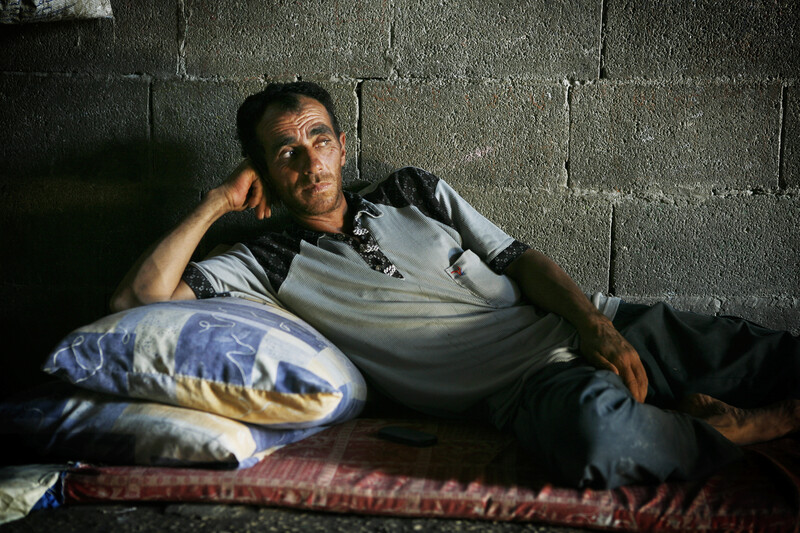
Heba’s father rests in their cave dwelling in al-Mufaqarah, 2012.
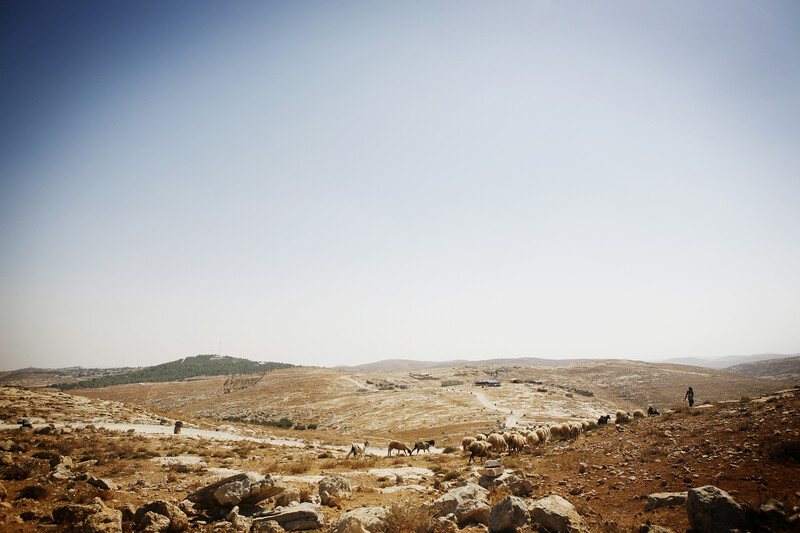
Sheep in the rolling hills surrounding al-Mufaqarah in 2012.

Men in al-Mufaqarah look in the direction of the illegal outpost of Havat Maon, which is connected to the settlement of Maon, in 2012. Settlers regularly attack Palestinians and their property under the guard of the Israeli army.
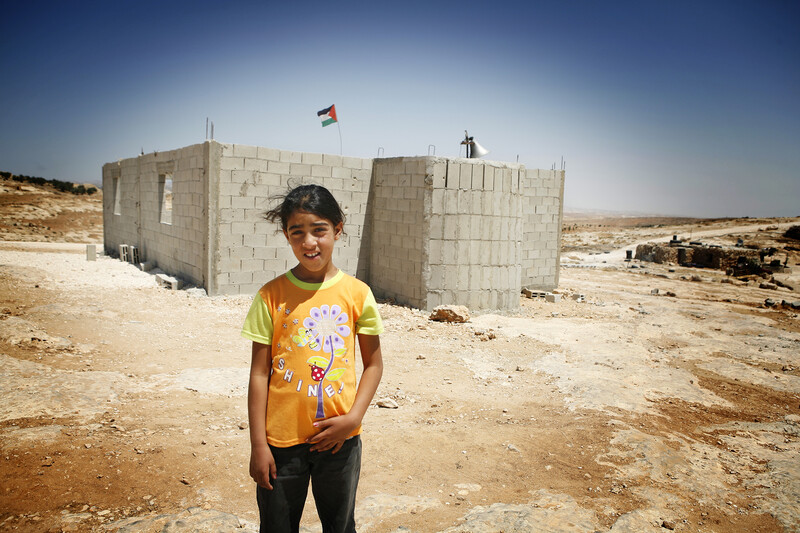
A girl stands in front of al-Mufaqarah’s newly built village mosque in 2012. To accommodate the natural growth of the village, a number of small homes and a mosque were built above ground without Israeli permits during the previous year.
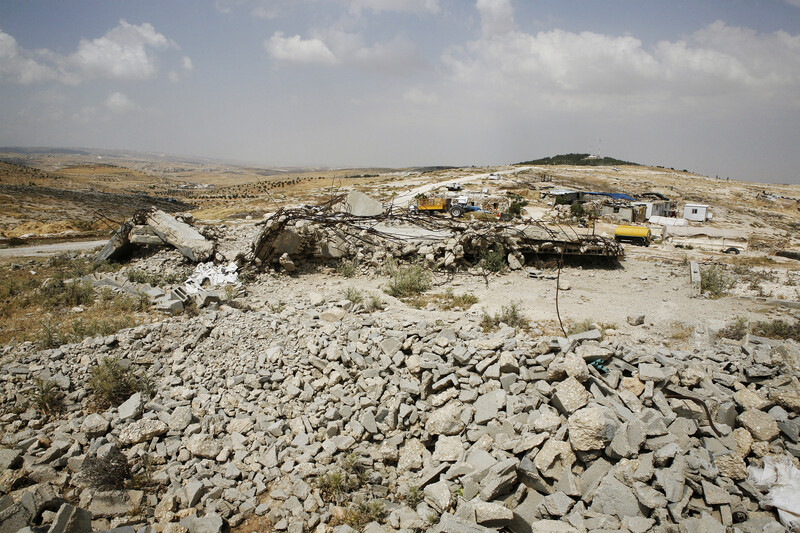
The newly built mosque after it was demolished by Israeli forces in December 2012. In 2011, year the Palestinian Authority erected pylons to bring in electricity from the nearby village of al-Tuwani. They were also demolished by Israel shortly after and al-Mufaqarah remains off the power grid.

Villagers at work to build homes above ground in al-Mufaqarah, 2012.

Children play a homemade board game inside a tent set up above ground by Heba’s neighbors as their cave became too crowded, 2012.

Trailer dwellings brought to al-Mufaqarah by international organizations in 2012.

Al-Mafaqarah has no paved roads leading to it. The paved road leading up the hill, photographed in 2012, was only laid when Avigayl outpost was established in 2001.
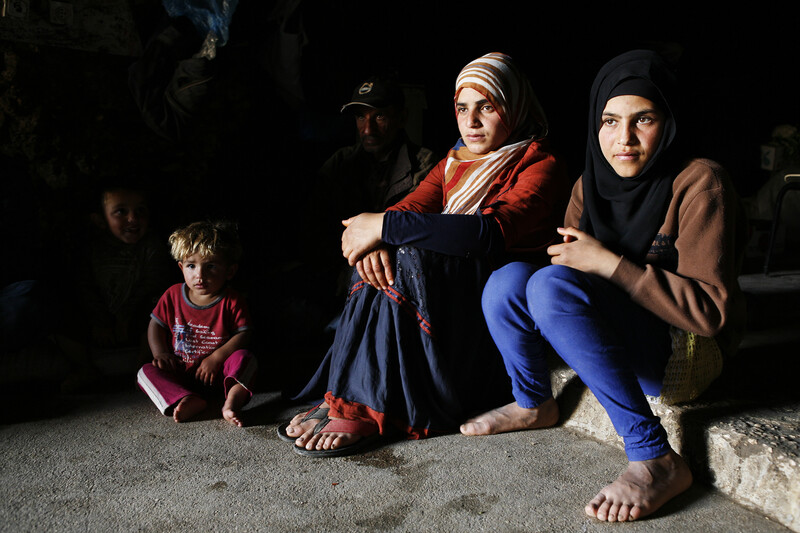
Heba (wearing a red blouse), her sister and uncle sit in the family’s cave dwelling in 2015. Three years after Israel’s state attorney exempted that al-Mufaqarah’s residents from forced expulsion, their lives remain in limbo.

Heba and her mother stand outside their cave in 2015.

Heba’s sister outside their family’s cave dwelling in 2015. Children from the hamlet travel to the nearby rural village al-Tuwani to attend school.
